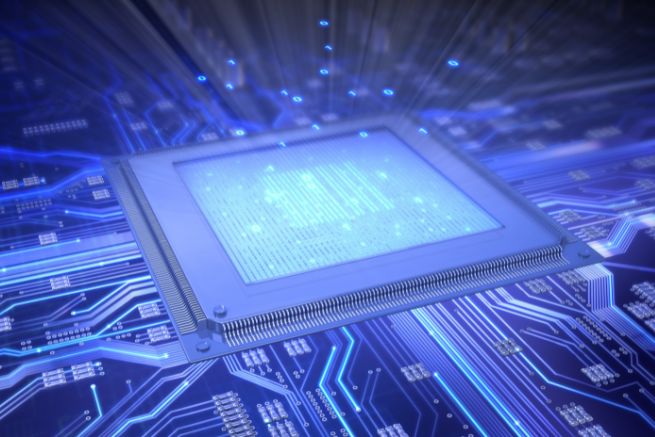Waste not, want not: An overview of electronic inventory management
Working with a constantly changing market and a wide range of industries, excess stock buyers help companies sell unused electronic components. This ensures production lines stay profitable, warehouses have enough space for new orders and excess stock gets used instead of ending up in landfill. Welcome to CCL.
What are electronic components?

All electronic devices need components. Components are tiny metal parts that make up the integrated circuit (IC) or ‘thinking’ part of an electronic device. From washing machines to medical scanners to electric cars – components make the product perform its task.
Also called microchips and semiconductors, components are assembled and arranged onto printed circuit boards (PCBs) before they’re integrated into electronic devices.
But before components go anywhere near a PCB, sometimes we’re called in.
At CCL, we buy and sell components when a company finds themselves faced with excess inventory. For example, a factory might have bought enough stock to make 10,000 iPhones but reconsiders the market and decides to make just 8,000. The company uses CCL as their excess inventory buyer to help sell the leftover components to other manufacturers or distributors.
What industries does CCL work with?

The vast choice of devices containing electronic components means we offer excess inventory solutions to an extensive range of industries all over the world:
Automotive
The boom of the electric car with its complex displays, complicated operating systems and ever-changing products means we often buy excess stock from automotive warehouses. We sell this on to other companies in the industry.
Lighting
The development of LED lights from standard bulbs means business is thriving in this sector. We offer excess inventory solutions to a number of companies updating their products to the latest electronic components found in LED lighting.
Medical
From high-tech baby scanners to fracture clinic LED screens – medical electronics is a specialist industry that’s always adapting. If a machine doesn’t work as well as once thought, or a product isn’t favoured by hospitals, the manufacturers must adapt the design to suit a hospital’s needs. Medical electronics is a unique field and machines must meet the highest standards.
Military
Electronic components are stored for longer in the arms industry than in other industries. This is just in case there’s an emergency.
For example, the Royal Air Force might go to a manufacturer to order missiles for their typhoon jets. The manufacturer then buys the parts to make a batch for training and education. But, in case of war, the factory must keep production going even if the microchip manufacturer stops making the parts. So, there’ll often be a lot of excess components, bought up and stored to make sure there’s back-up if needed.
Sector-specific components
Sometimes components can be used by more than one sector. However, other components are designed to suit the needs of a specific industry. For example, a microchip used in a washing machine won’t be as resilient to high temperatures as a similar one found in an electric car. We help companies from a range of sectors sell and purchase the specific components they use.
What are the causes of excess inventory?

There are many reasons why manufacturers end up with surplus stock:
Competition
A company is all set to manufacture a product and orders all the parts, but in the meantime one of their competitors releases a new design. The company must then return to the drawing board and adapt their product’s features to match the competition. Some of the original components will fit the new design. But some don’t and become excess stock.
Increase in demand
When the pandemic hit, people – restricted to their homes – started buying all sorts of electronic goods online. Factories were searching far and wide to find more microchips to meet this increased demand. This caused a worldwide electronic component shortage. In a panic, factories placed multiple orders with microchip manufacturers in the hope of guaranteeing the arrival of one. But if all of the orders were fulfilled, they ended up with a pile of excess inventories.
Cost of living crisis
As the world hits a recession, people don’t have the money to pay for new products. Some factories will start to close down. Manufacturers will have an excess of microchip technology stock sitting in their warehouses without demand. That’s when CCL can help.
Who buys excess components?
As excess stock buyers, CCL sell the parts we’ve bought to speculative purchasers across the World. These buyers are prepared to buy speculatively and store components to sell on when they’re needed again in the future. We make many excess inventory sales online, advertising on the world market through trading platforms. We also have an office in China.
A circular market
The nature of this industry means some components end up being bought and sold multiple times. They’re originally created in a factory. The factory sells to a distributor. The distributor sells to a manufacturer. CCL buys any excess, unwanted stock from the manufacturer and sells it back to a distributor – who sells it back to a different manufacturer. And the circle continues until the components eventually end up in a product.
It’s important to remember that once a microchip has been installed into a printed circular board, it can’t be recycled. CCL can only sell new parts that haven’t yet been integrated into operating systems.
Benefits of inventory management

Companies differ in their motivations for selling off excess stock:
Storage space
Many factories with small production sites simply don’t have the square footage to store leftover components.
Financial security
By selling off unwanted parts, companies even out their cash flow and ensure they can pay people’s wages on time.
For the planet
If companies don’t use their stock, it’ll lie in a warehouse for years or, worse still, get discarded in landfill. By selling them on to other manufacturers, they can be put to good use in other products.
Consignment vs. Outright Buy
We work around the world in partnership with supply chain, production and purchasing managers, offering two types of excess inventory solutions:
Outright Buy
Often the most popular option, CCL purchases the stock completely through outright buy. This means it’s taken off the factory’s books and they can focus purely on production. You’ll see an instant financial return.
Consignment
Consignment is a longer-term route with potentially higher rewards. Companies still own the stock, but CCL stores it while we find it a new home. Waiting for the market to turn, or a new product design that needs these specific components can be very profitable. However, you don’t know when this opportunity will arise. It may be a month, or many years. It’s very difficult to tell. But if the parts don’t sell, there’s always the option to go for an outright buy further down the line.
Speak to our team of experts about how we can help take any excess electronic stock off your hands. We can guide you through the options in more detail and find the right solution for your business.
10 Oct 2023
Last edited on: 10 November 2023